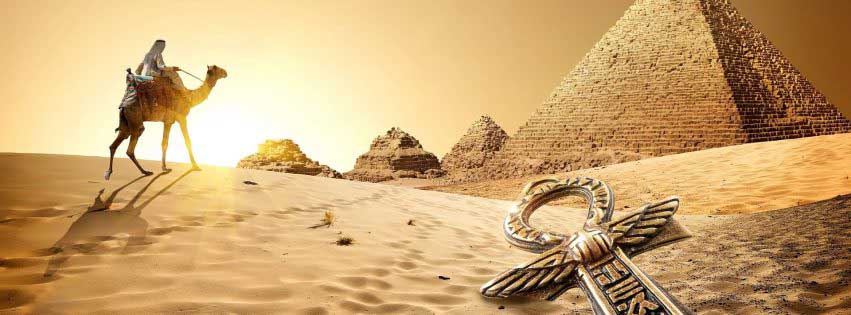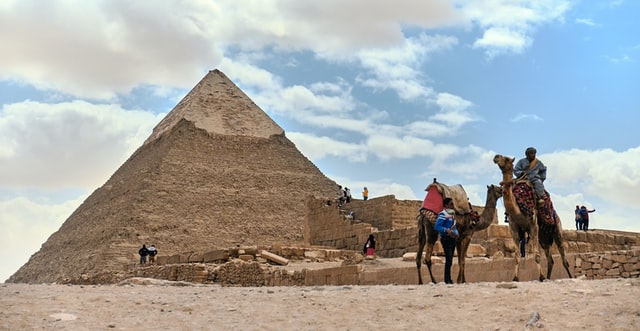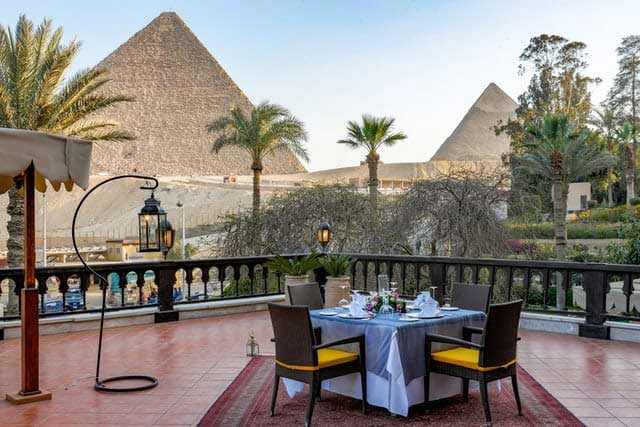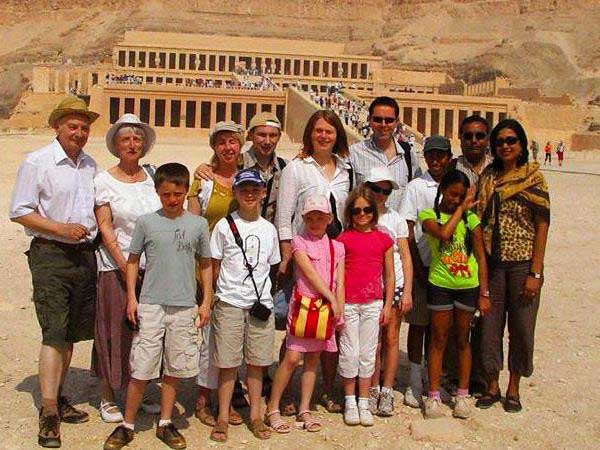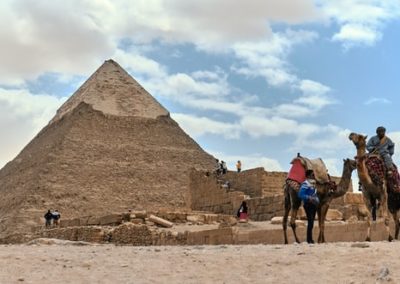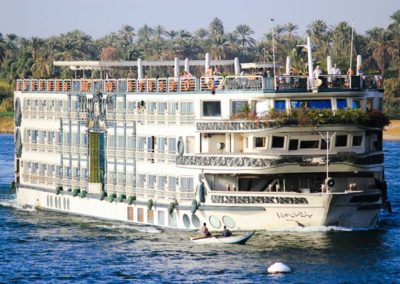
Traveling in Egypt
Egypt Culture, beaches, and adventure:
Egypt is a country for traveling _ the more you want to see and experience, the more you have to travel. Unpack your suitcase, pack it again, leave the hotel for the bus, the bus for a Nile boat, then back to a hotel this is a country for active travelers! »Egypt has it all«, is an advertising slogan of the Egyptian tourism organization. This is well said and also true. The classic Egypt vacation, which starts with the pyramids and ends in Abu Simbel, no longer satisfies most tourists today. Almost without exception, visitors who have seen the Valley of the Kings and Karnak now follow up with a relaxing week on the Red Sea; and they need the relaxation, too.
In fact, more and more tourists are booking a beach vacation after visits to the monuments of the pharaohs. Relaxation is important, too. Another group, smaller in numbers but growing, consists of vacationers who come for short adventure trips into the Western (Libyan) Desert, to distant and magical oases such as Siwa and Bahariyya, or into the white desert.
Package tour or individual vacation in Egypt?
For a pure beach holiday, it is advisable to book a package — this is how to get the best price. Individually bookable hotel rates cannot begin to compete with the package prices of large providers. Package booking is also better for getting to know the highlights of pharaonic Egypt as comfortably as possible taking into account that this generally means moving around with a group, usually in an air-conditioned bus with tinted windows.
It is not quite as comfortable for individual travelers, who will see more of the land and the people and can view the pyramids and temples as thoroughly as they want, but pay the price in terms of time-consuming travel planning. Only the larger hotels can be booked via the internet. Bus and train schedules are inaccurate; tickets, which are very inexpensive by comparison to European prices, must be purchased on the spot days in advance.
Travel in Egypt by car:
Egypt presents special difficulties when traveling by car as well. To make a rough generalization, Egyptian traffic and drivers are somewhere between a hazard to public safety and pure chaos. Rental cars are expensive; petrol stations not always there where you want them. Driving long-distance across the country at night is an extremely bad idea, and to protect tourists, many routes, such as Aswan—Abu Simbel, can only be traveled by car at specific times, on which information is available locally. This may sound discouraging, but is not intended to be so rather, it is an appeal to your patience! The reward is getting to know a delightful land and friendly people.
Package travelers have it easy. Tour organizers offer ready-made round-trips (Nile cruise, Cairo, beach vacation) with a usual duration of 14 to 16 overnight stays and a guarantee of seeing the highlights of Egypt within this short time period.
For speedy travelers, there are even ten-day round trips. The one-week Nile cruise between Luxor and Aswan is also a very popular option. For individual travelers, the following is a general rule of thumb: depending on the level of interest, three to six days should be planned for Cairo; two days for the western Nile delta, two to four days for Alexandria and its surroundings, three to six days for the Mediterranean coast and the Siwa oasis, three to six days for Luxor, three to five days for Aswan and Abu Simbel, four to six days for a Sinai round trip, and five to ten days for a tour of the oases of the Western Desert. Happy are those who have three to four weeks’ time to journey through Egypt on their own!
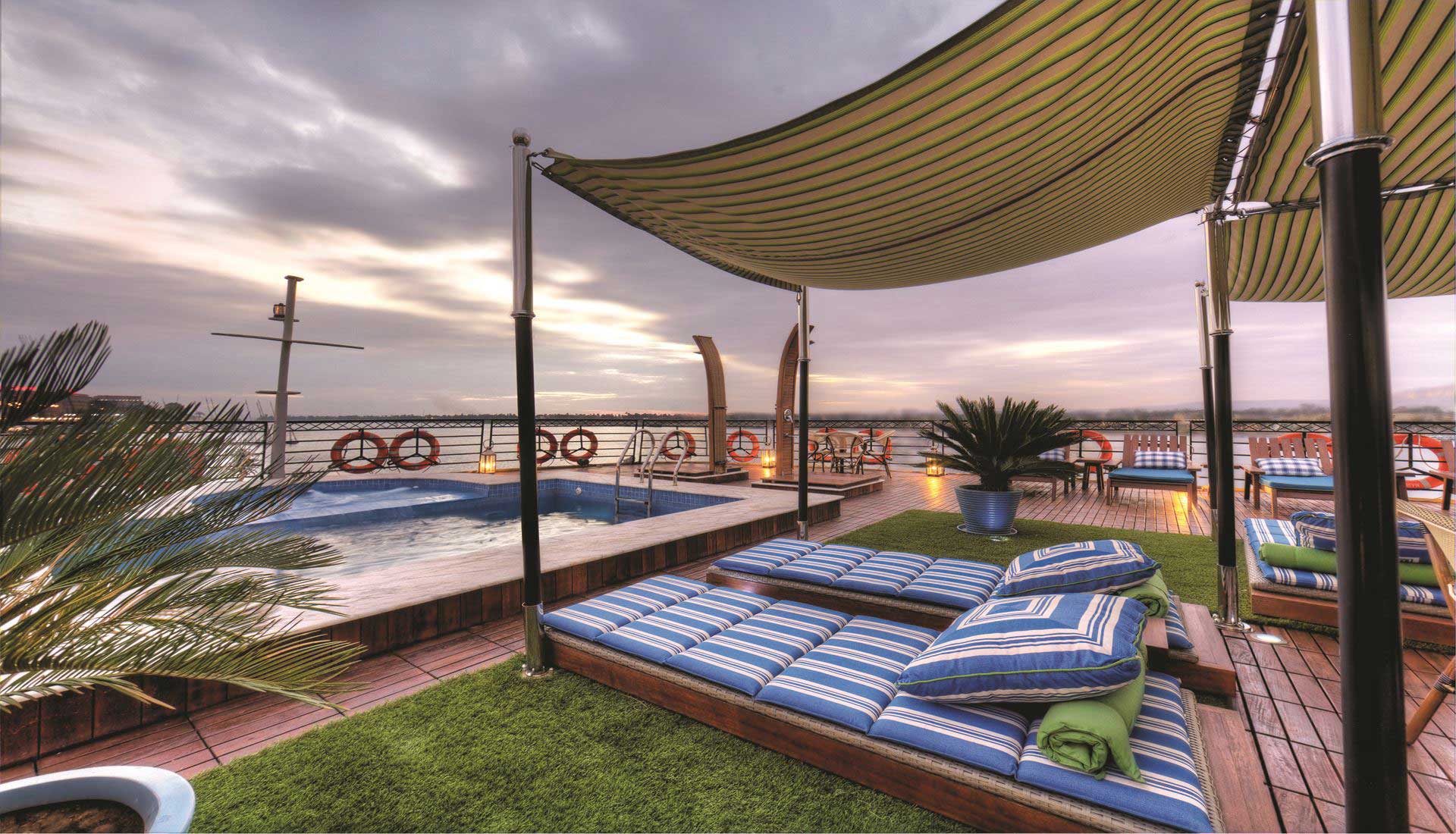


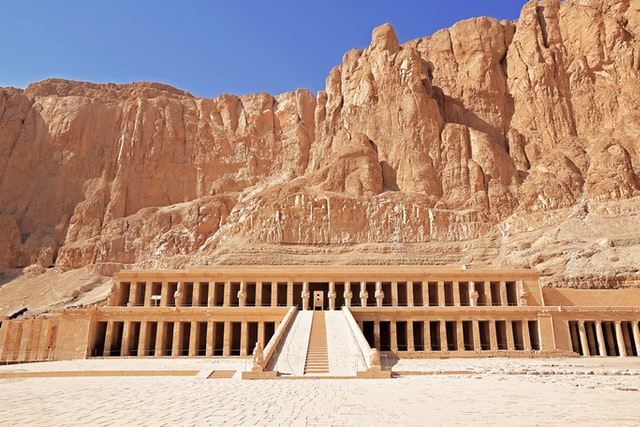
The Nile Journey in Egypt
Egypt Travel Map
The classic Nile journey from Cairo via Luxor to Aswan or vice versa can be accomplished by car, train, or ship.
For fans of Egypt, the classic Nile cruise is a dream which everyone should experience at least once in their lifetime, taking a difficult journey into account in order to see the great buildings of the pharaohs. More and more travelers are even doing this in the summer when the trip from Cairo to Abu Simbel is really hot. The advantage is that fewer visitors throng the monuments than during the classic travel months.
The Egyptian capital Cairo is the gateway to the land of the Nile for many visitors. With its numerous points of interest and its special atmosphere, it requires at least a three-day stay. Another day should be planned to view the nearby pyramids of Giza.
Traveling from Cairo to Abu Simbel
From Cairo, the route leads up the Nile to al-Badrasayn, from where worthwhile trips can be made into the former healing baths of Heluan, to the ruins of the old capital Memphis and to the pyramids and burial sites of Saqqara. Further upstream, Masghuna is a good starting point for viewing the pyramids of Dahshur. Approximately 30km/19mi up the Nile is El-Mataniyya, from where it is not far to the pyramids and mastabas of List. Approx. 20km/12km further, at El-Rikka, is an opportunity to take a short side trip to the pyramid of Meidum.
34km/21km further on lies Beni Suef, from where the main road leads north-westwards to the pyramid of OEI-Lahun and then on into the large oasis of O El-Fayoum. From Beni Suef, continue up the Nile (check in advance the safety situation and whether it is possible to travel further!) via Biba with its Coptic church, which can be seen from afar as a landmark, and El-Fashn, close to the ruins of the Greek city of Ancyronpolis, to Maghagha, a central location with a sugar plant. From here it is not far to Beni Masar. Approx. 15km/ 9mi westwards are the ruins of the ancient city of Oxyrhynchos, which developed into an important monastic center after the introduction of Christianity.
Almost 20km/12km farther upstream lies the large Nile island of ElSiriya with a lovely Hathor sanctuary. Beyond the town of Samalut is an important landmark, the steep Gebel el-Ter with excellent views and a Coptic monastery. The Holy Family are said to have rested in the cave below the church during their flight.
Go 25km/16mi further up the Nile to the governor’s capital of El-Minya.
Approx. 20km/12mi upstream from here, the rock graves of Beni Hassan can be explored. Soon afterward, the ruins of the Old shrine of Hermopolis Magna follow. The interesting sights close to Mallawi are the burial temple of Petosiris as well as the ruins of Akhenaten’s capital of Tell el-Amarna. Above Deirut, where the Ibrahimiya canal branches off, the route follows the Nile to Nasali Ganub and the nearby necropolis of Kussai. South of Nasali Ganub, is the Coptic monastery of Deir el-Maharrak at the edge of the desert.
Nearly 50km/30mi to the south lies the large Upper Egyptian city of Asyut with its famous rock graves and a Nile dam completed in 1902. Via Abu Tig, Sidfa and past the plains of Qaw al-Kebir (Antaeopolis), where, according to Diodorus, the decisive battle between Horus and Seti took place, the city of Sohag lies in a loop of the river. It became known through two nearby Coptic monasteries. Cross a bridge to Akhmin on the east shore of the Nile, where some monumental statues were found in the 1980s, and do not miss the chance to visit the necropolis of Abydos, which lies approx. 50km/30mi to the south of Sohag at the edge of the desert plateau. Its highlights are the sanctuary of Osiris, the temple of Seti I, and the temple of Ramses Il.
Approx. 70km/45mi further up the Nile is another highlight, the old Egyptian city of Dendara with the ruins of the famous Temple of Hathor. Not far to the south, a Nile bridge leads to the old potters’ city of Qena. 23km/14mi south from here is the old trading site of Qift, where wares from Arabia and India were traded even in early antiquity. Continue via Qus to the temple city of * Luxor, a base for visits to the extensive necropolises and enormous burial temples of Thebes, the Valley of the Kings and the imposing temples of Karnak. Approx. 15km/9mi south of Luxor, at Tod, temple ruins from Ptolemaic and Roman times can be seen.
A good 50km/30mi south of Luxor — is the provincial city of Esna at a Nile dam. It became famous through the temple of Khnum. 34km/21mi further up the Nile, it is worth staying at EI-Kab, where the ruins of old Nechab, the Temple of Amenophis, some rock graves, and the pyramid of El-Kula are of interest. From here continue 22km/14mi south to Edfu with its imposing Horus temple, and via Silsila, where stone quarries were worked, particularly at the time of the New Kingdom, to the city of Kom Ombo, where several thousand Nubians settled after the construction of the Aswan High Dam. The great double temple of Suchos and Haroéris is worth a visit here.
After another 44km/27mi, the journey ends on the east shore of the Nile in the beautiful city of Aswan. Especially worthwhile goals for trips are the Nile islands of Elephantine and Kitchener, the rock graves, the Monastery of St Simeon, the temple of Philae and of course the old dam and the new high dam.
On no account miss the trip — best made by plane or bus — from Aswan to the great rock temples of Abu Simbel.
Related Articles
Related
Seth
Also known as Set, Setekh, Suty and Sutekh, Seth was the god of chaos, darkness, violence, evil, deserts, storms, and one of the Osirian gods. In the Osiris myth, he is the murderer of Osiris (in some versions of the myth, he tricks Osiris into laying down in a coffin and then seals it shut.)
Ancient Egyptian Gods And Goddesses
For all ancient Egyptians, the world was filled with mystery. Much of what they experienced in the world around them was unknowable and frightening. The ancient Egyptian gods and goddesses represented aspects of the Egyptians’ natural and “supernatural” surroundings and helped them understand its many aspects.
Horus
Depicted as a falcon or as a man with a falcon’s head, Horus was a sky god associated with war and hunting. He was also the embodiment of the divine kingship, and in some eras the reigning king was considered to be a manifestation of Horus.



